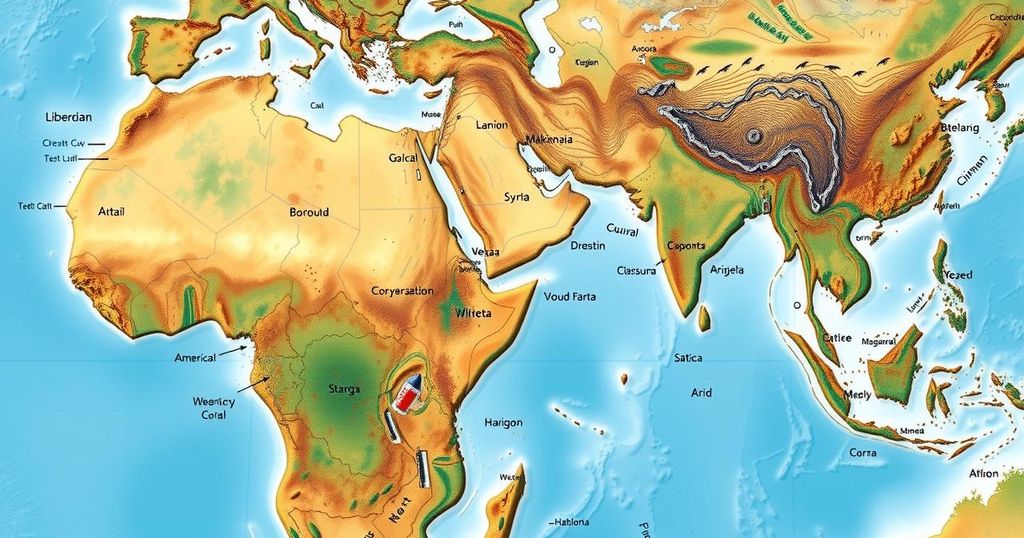Modeling the Impact of Climate Change on Corvus Species Distribution in Somaliland

A study in Somaliland modeled the distribution of the Somali crow in relation to climate change. Using a log-Gaussian Cox process model, researchers assessed the influences of climatic variables on crow presence. While some positive correlations were noted with climate factors, significant spatial randomness also played a crucial role in determining distribution, highlighting the complexity of ecological patterns.
A recent study published in Frontiers in Ecology and Evolution has shed light on the impacts of climate change on the distribution of the Somali crow, or Corvus edithae, in Somaliland. The research, conducted by teams from Amoud University in Somalia and Princess Nourah bint Abdulrahman University in Saudi Arabia, utilized a log-Gaussian Cox process model to predict spatial patterns of the species. Through the innovative use of the R-INLA package, the team incorporated various climatic factors including average temperature, precipitation levels, and even solar radiation while seeking to understand how these variables might influence the crow’s habitat requirements.
The analysis indicated that there might be positive correlations between the Somali crow’s occurrence and mean annual temperature, precipitation, and wind speed. However, the results also displayed some negative associations with temperature extremes and solar radiation, although the wide 95% credible intervals suggested significant uncertainty surrounds these specific climatic impacts. Interestingly, other important factors like spatial autocorrelation and unobserved environmental factors were found to play a critical role when it comes to the crow’s distribution, pointing out that climate alone does not paint the full picture.
Model predictions highlighted a generally low occurrence intensity for Corvus edithae across Somaliland, with certain coastal regions showing higher expected densities. This raises the potential for these areas to serve as core habitats for the species. Furthermore, the convergence diagnostics from the model reinforced the reliability of the parameter estimates, emphasizing a solid approach to understanding the interplay between environment and species distribution.
The research concludes that while climate conditions are undeniably important, it is crucial to take into account the complex spatial dependencies and inherent environmental variations that influence the distribution of the Somali crow. This study not only contributes valuable insights into conservation ecology but also offers a robust framework applicable for addressing similar ecological challenges where data may be sparse or uncertain.
In summary, the study reveals that climate change is a significant factor affecting the distribution of the Somali crow in Somaliland, but also stresses the need to consider spatial dependencies and other environmental factors. The model developed provides a promising avenue for conservation efforts aimed at understanding and protecting this species amid changing climatic conditions. Overall, this work enriches the existing knowledge on avian distributions, showcasing how Bayesian approaches can enhance ecological forecasting.
Original Source: www.frontiersin.org







